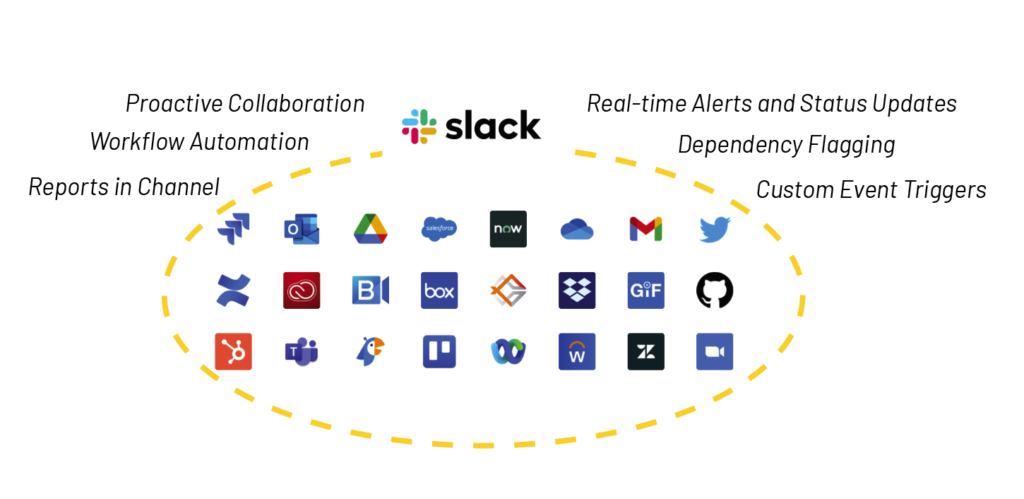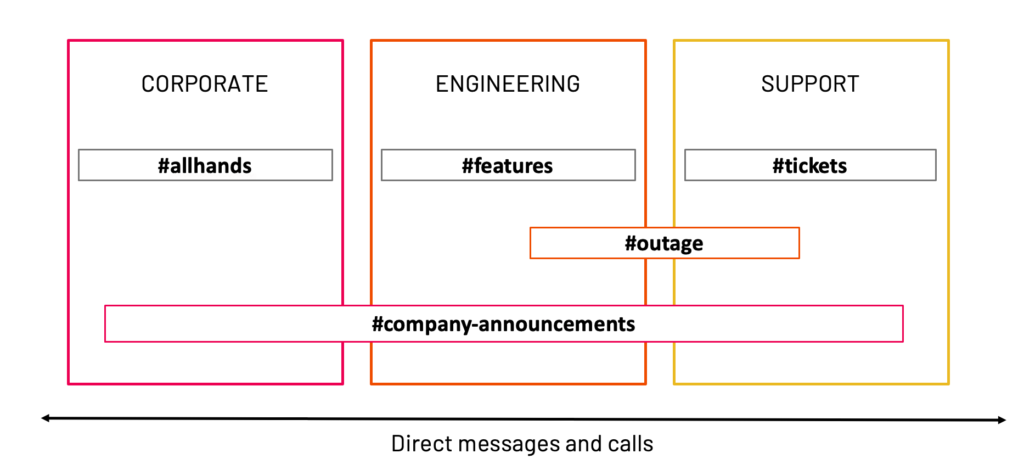Message Driven Agility (pt. 2): Harnessing Business Signals that Matter
Turn down the noise of your software signals and turn up the context with Slack
Don’t miss our previous blog, Message Driven Agility Pt 1 – Fighting Fragmentation with Slack
The possibilities of message driven agility are ripe for the taking and transcend the enterprise. Smart notifications that keep you tied to the pulse on digital transformation are the way of the future and the path to efficiency.
Imagine a world of work where the right parties have the information at their fingertips in order to be proactive about dependencies and delays: Agile reporting delivered in Slack channels, transitioning Kira tickets through Slack workflows, custom event reporting, dependency reporting and more can all be a convenient click away with a Slack-first approach sitting on top of your data and technology.
The signal-to-noise ratio
Every day, we are bombarded with software notifications, alerts and triggers, many of which aren’t actionable. In an effort to bring some order to this notification overload, we need to rethink, redesign and relaunch Slack grid environments to Pare back the signal-to-noise ratio and tune up the important signals hiding across your technologies.
At Cprime, we find that while integrating your modern tech stack together through Slack, we are also reeducating customers on a few topics to create business signals that matter:
Message driven Agility – First, Slack is more than a chat tool and you should use it that way. If you aren’t, you aren’t taking advantage of enabling agility in your organization to learn and make faster and better decisions.
Invest in lasting change – If you have Slack or know that they use it in IT, consider rearchitecting it for the wider organization in order to leverage it as a business translation top layer over the top of all of your technologies. Get everyone onboard and invest in change management to adjust to a simplified way of working.
A convenient single source of data -Slack’s smart, contextual messages, allows for a single source of truth that the organization can rely on as a main source of data, through every piece of technology.
Stay on the pulse of progress – Get smart information on critical tasks: Get notified anytime someone is introducing work into the system after the plan has been set. Get custom messages with context about completed work. You can even audit what wasn’t completed and what teams and work are holding the organization back from achieving its objectives.
More than likely your teams are already collaborating and communicating on work in a Slack channel. Take it a step further by dropping in relevant business information into new channel structures that tailor your workflow for faster value.
The common ways we see Slack emerging as a business translation layer break down into 3 areas:
1) The work management layer: Provides context and work updates such as status, stages, dates, milestones. (*Because all of your tools and workflows should integrate inside Slack)
2)The people/culture layer: Impacts the way people organize, communicate and collaborate around work and technology. (*Instead of channels organized around your org chart, think of channel structures that form to how your business delivers to customers Ex. work intake, OKRs, work released, risk management, dependency management etc.)
3)The data management and data governance layer: Revolutionize how data is rolled up and aggregated to ensure that plans are realized and outcomes are achieved. (*Think: one place for reporting without needing to do data mashup acrobatics)
The Results
Here are some use cases we see emerging as organizations relaunch their chat tool into a business transformation enabler:
• Create cross functional team players: As you look to improve collaboration you can design specific Slack channels that break down the traditional functional team silos and instead promote collaboration from a larger body of cross functional team players. Everyone gets their info through channels!
• Achieve more than before by doing less: As you start to connect multiple teams and teams of teams all focused on working together in channels, you can start reducing manual repetitive tasks and standardize work intake, without leaving Slack. A Slack first approach allows you the ability to stay current, stay connected and stay up to date wherever you are.
• Automate to agility: As you start to deliver faster value as an organization in sync, you can start to mature and improve consistency of your processes and practices leveraging automation to cut down on the manual repetitive tasks that tend to happen over and over again. Instead, use conditional logic and automation to your advantage.
As you bring on the wider organization using their own set of tools, make sure you allow Slack to ingest those data signals so that you can let Slack be the enterprise tool layer that processes and syndicates your business information across the organization.




